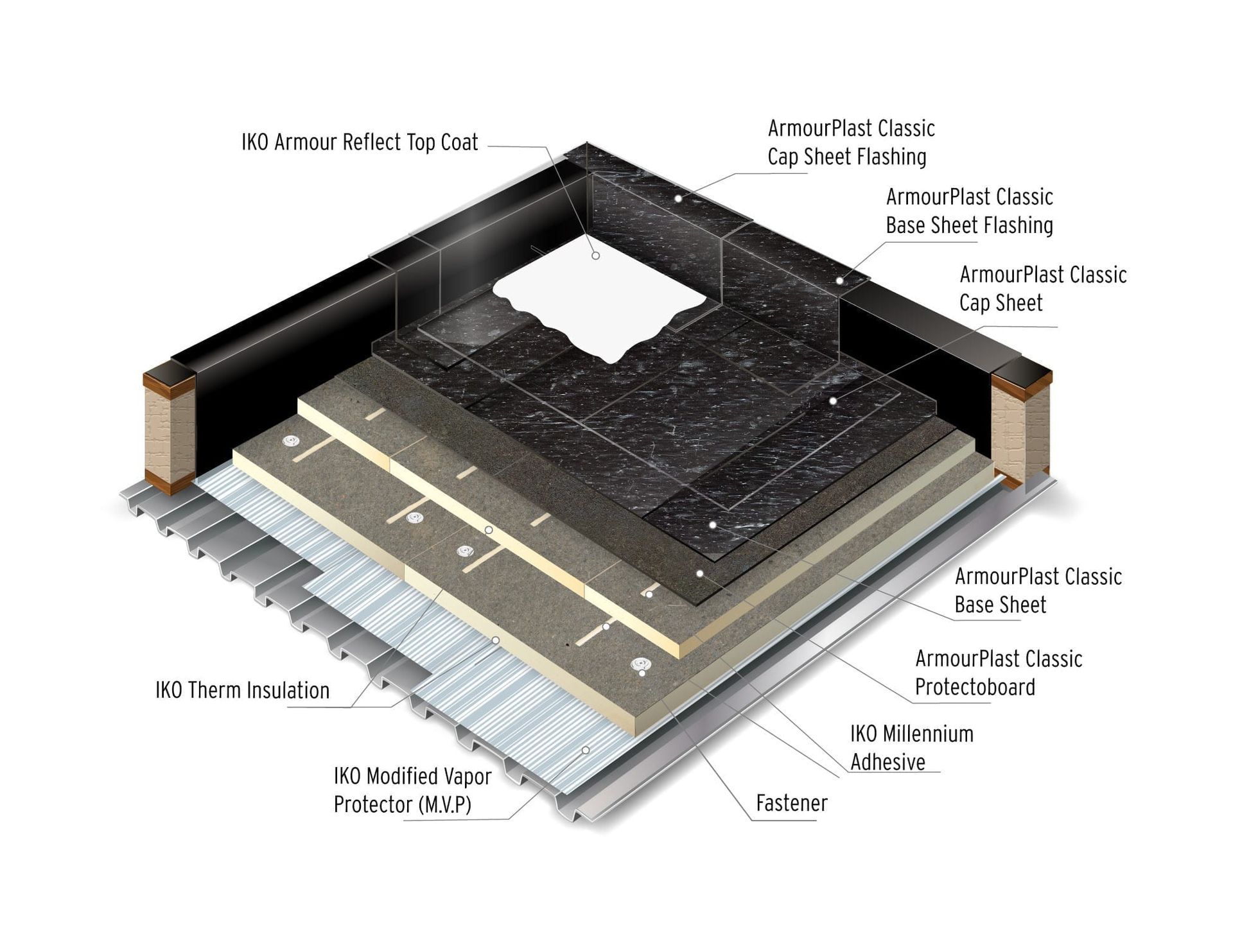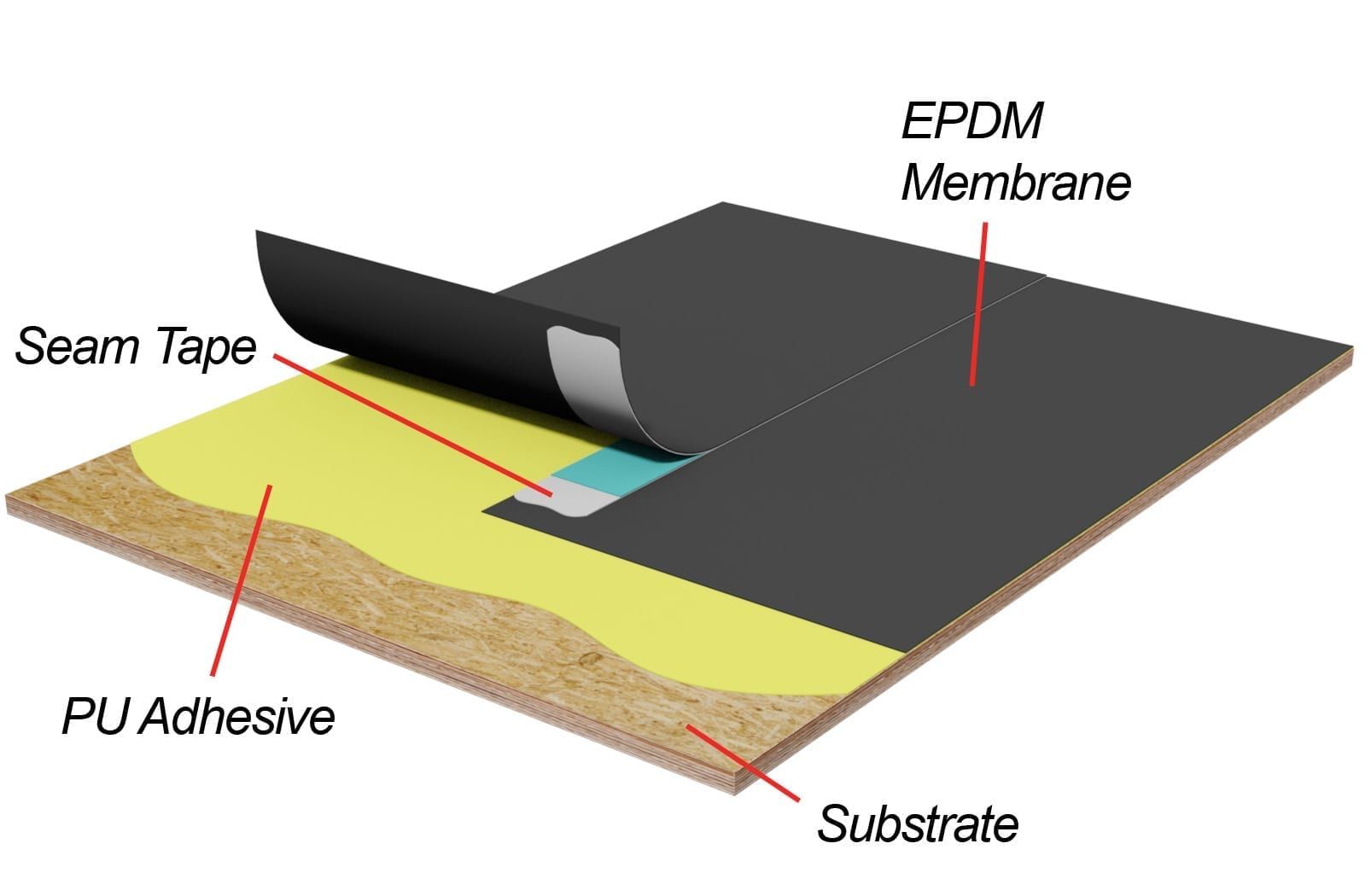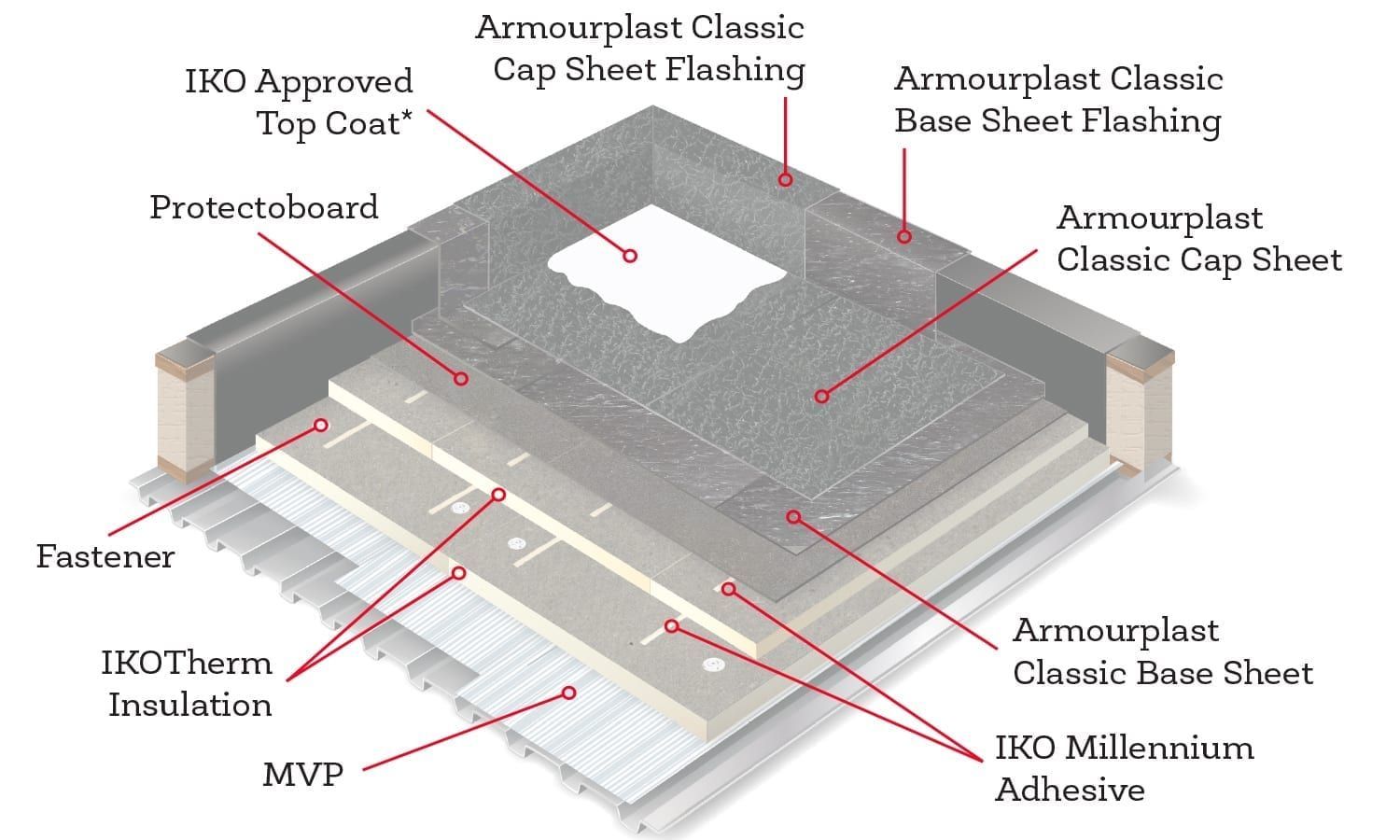FLAT ROOFING
Flat roofs offer versatility, low maintenance requirements, and enhanced energy efficiency compared to sloped roofs, making them particularly attractive to new home builders seeking cost-effective long-term ownership solutions.
WHAT YOU NEED TO KNOW :
There is a wide variety of flat roof materials available, each with its own advantages and drawbacks. The following outlines ways to build, protect and reinforce your roof.
This traditional method involves layering roofing felt and asphalt-based pitch, often with gravel or a reflective coating for heat reduction and durability. While cost-effective, BUR requires regular maintenance and can become heavy over time, complicating removal. However, it remains a lower-cost option compared to newer materials, albeit with higher maintenance needs.
EPDM roofing boasts a solid track record with its rubber-like composition. Easy to install over clean, uniform surfaces, EPDM offers longevity with minimal maintenance. However, its dark color absorbs heat, necessitating a reflective coating or opting for the white surface variant to mitigate heat buildup.
TPO roofing presents an affordable single-ply option, albeit still evolving in performance. Made of thermoplastic olefin, TPO comes in various roll sizes for versatility in flat roof projects, requiring a clean substrate for installation. While cost-effective, it lacks the established performance history of EPDM or PVC.
Modified bitumen offers a reliable solution for residential and small-scale commercial roofs. Easy to handle and apply, it features overlapping seams fused with a flashlight or sealed with adhesive, topped with a reflective coating for durability and heat reduction.
CAN YOU HAVE A FLAT ROOF WITH SHINGLES?
Roofing experts recommend avoiding shingles for flat roofs because they can lead to more leaks. Instead, it's better to use large squares or single sheets of material to minimize potential sealing points.
A popular option for flat roofs is the Self-Adhering Membrane Residential Roof System, which provides multiple layers of protection like a membrane roof but has the appearance of traditional shingles. They're easy to apply with a peel-and-stick method and come in single, double, or triple layer options, making them a popular choice for roofs with at least a slight slope.
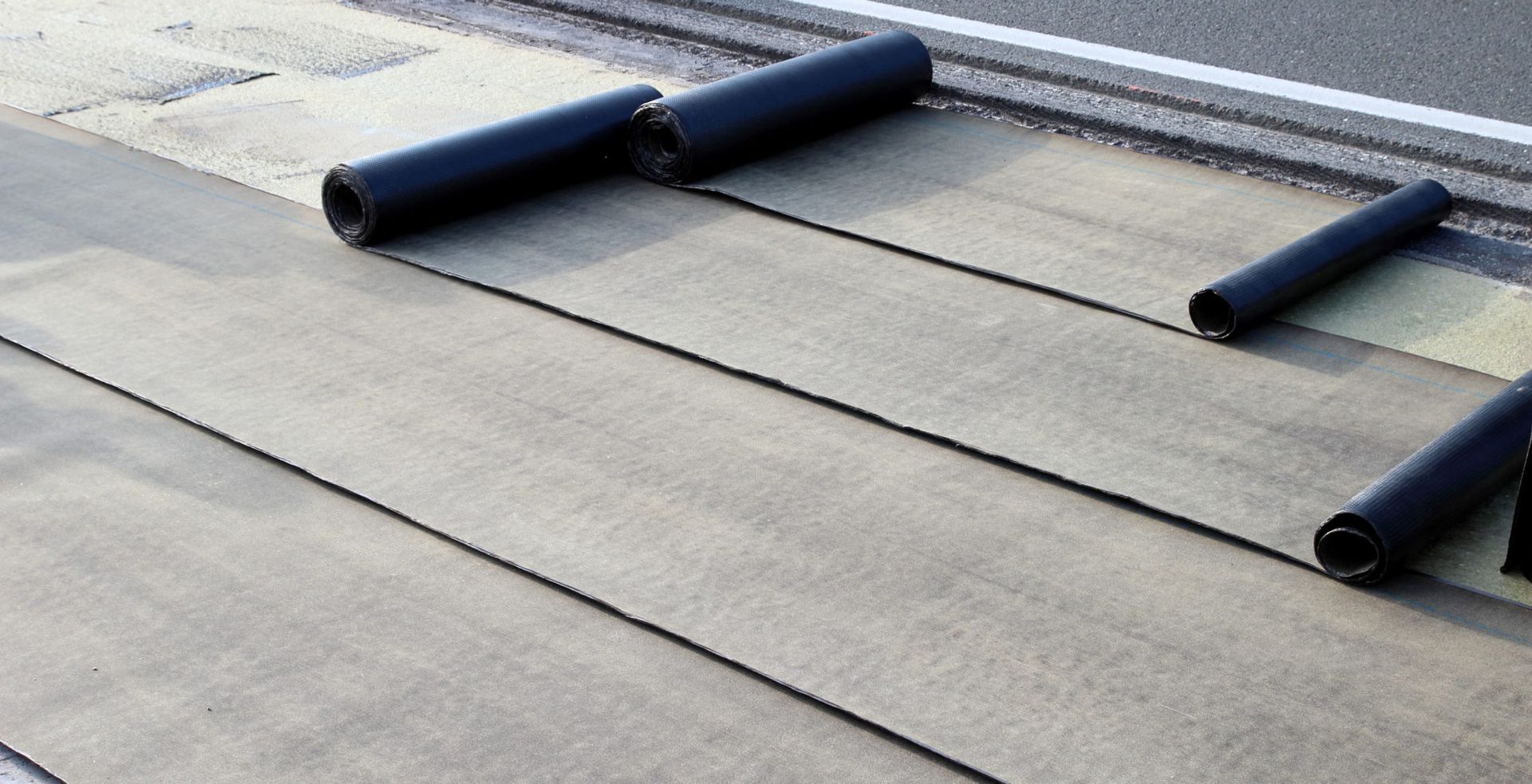
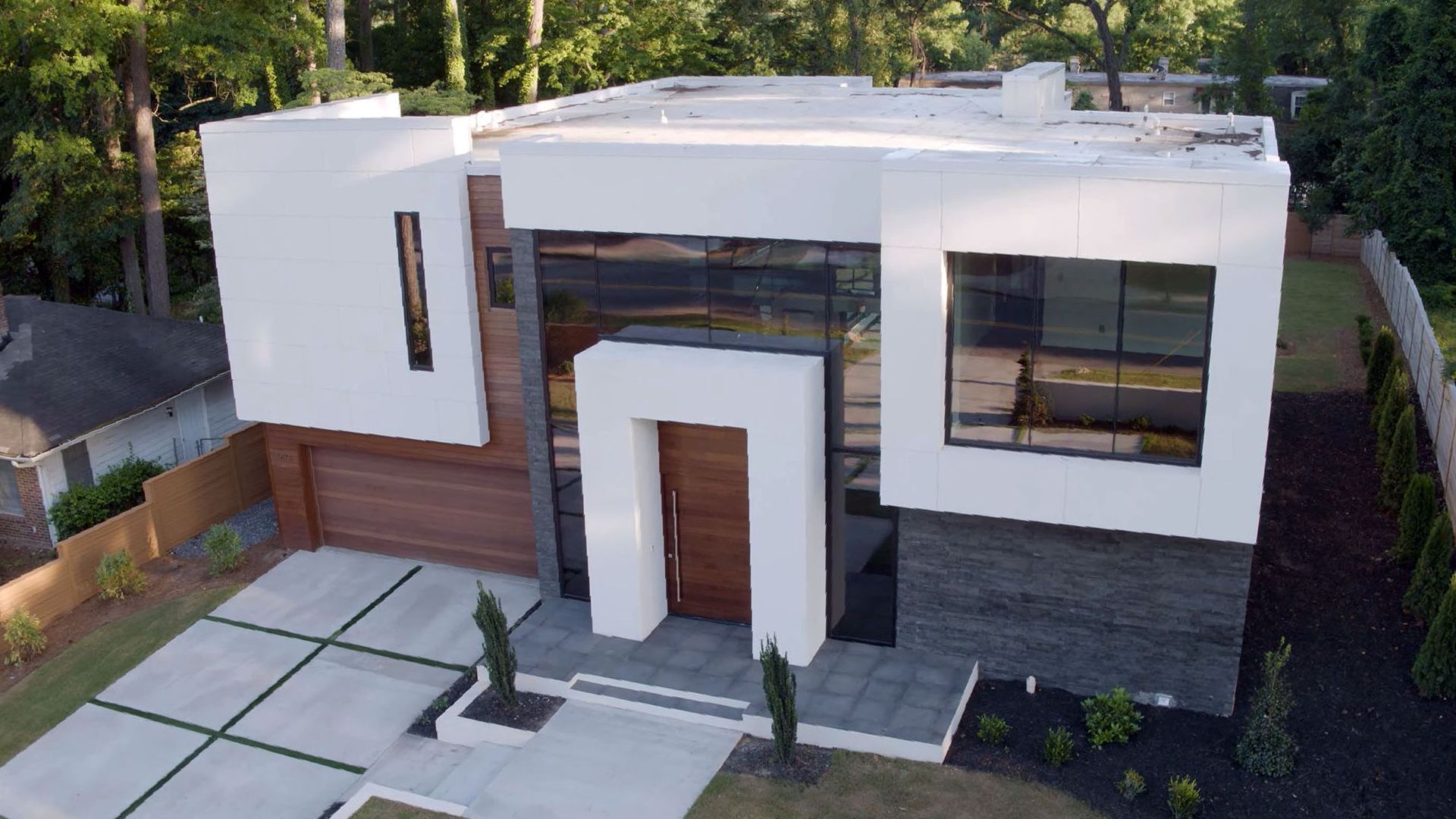
HOW TO MAKE A FLAT ROOF LAST
- Wait at least 48 hours after rainfall to clean and inspect the roof to ensure any water has evaporated, indicating proper drainage.
- Remove debris such as leaves, branches, and gravel that could block drainage holes and cause water pooling.
- Check flashings around chimneys and skylights for cracks or rust and arrange repairs if needed.
- Inspect the top protective layer (usually gravel or chipped mineral mixture) to ensure it hasn't dispersed, leaving the membrane vulnerable to sun damage and leaks.
- Look for any damage, punctures, rips, or wrinkles in the membranes, which may be hidden by gravel or other material.
- If there is any damage and needs replacement, contact FLO Construction for proper application over the roofing material.
Don't settle for less – contact us for superior roofing services.
Customer satisfaction is our priority, and we strive to deliver superior service to all our clients. Contact us today for a free estimate and experience why FLO Construction is the top choice for your gutter needs.

